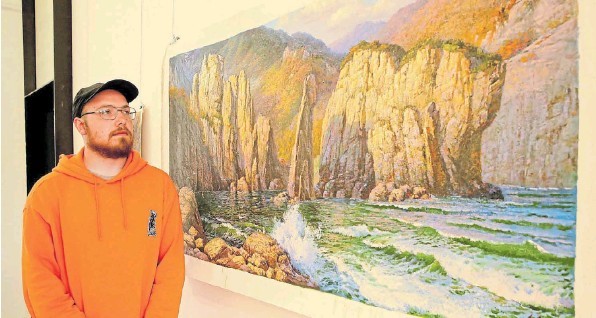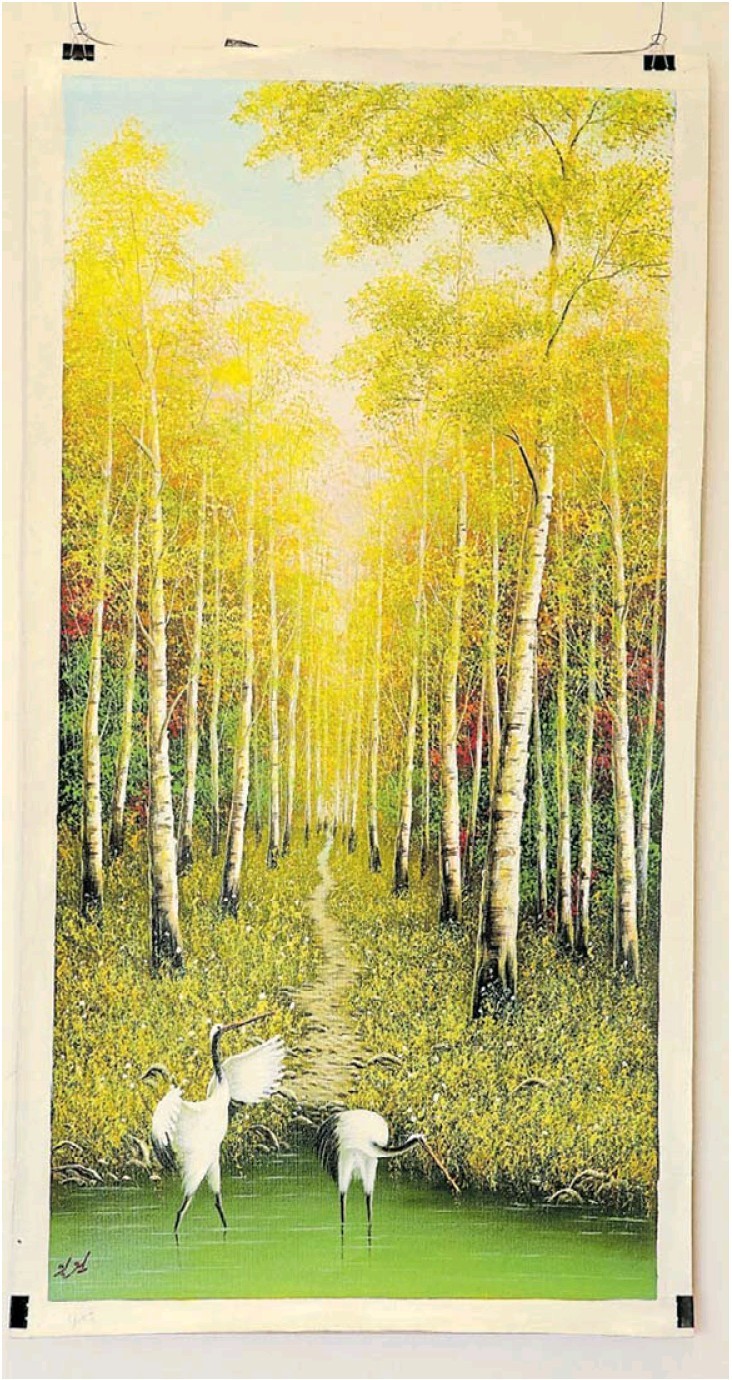Drawing inspiration from the likes of the late Nelson Mandela and other world leaders, NMU doctoral student, Ruehl Muller is challenging people’s perceptions of how art can be used to communicate ideas and philosophies.
Intrigued by how the world views the Democratic People’s Republic of Korea or North Korea Port Elizabeth-born Muller, 27, has curated a collection of artwork from the isolated Asian country which he is hoping will shed some light on its true beauty.
“Rather than the symbols of war, [some of the North Korean artworks] have images of two birds, which symbolises the two Koreas [North and South] sharing the space.
“It is very pro-collaboration, pro-unification, because unification is an important issue for them,” Muller said.
The North Korean Art Exhibition was a means of showing that the Koreans were open to this discussion and that they were not only an isolated “island” that the media made them out to be, Muller said.
“Remember North Korea is a socialist county so there is no advertising, there is no branding so this is visual communication for them.
“This is what you will find in North Korea in place of adverts - so on billboards, bus stops, they show oil paintings like these,” Muller said.
The 30 artworks are part of a larger collection owned by Muller, most of which were commissioned through the North Korean consulate and arrived days before the exhibition was launched.
From painstakingly painted tigers, to waterfalls and images of landscapes, among others, the art speaks for itself.
“If you go up close it actually looks like a mess, but once you stand back it looks like a picture it is brilliant.
“I wonder how they painted it? They must have done a little bit, then stood back and ascertained and then gone back,” Muller said.
Most of the artworks, including intricately woven embroidered scenes of The Last Supper and a couple in an intimate embrace, were done by what was termed “peoples artists” - who were the most prestigious artists in North Korea, Muller said.
“The art is not seen as an element of individualism.
“This is part of the ideal of socialism, that everyone is part of the greater system where the individual is not the main point.
“The point is what it shows and actually is us, the observers, the general public, are experiencing the artwork; they are important,” Muller said.
As part of his dissertation, Muller said he hoped to demystify the notion that North Korea was a totalitarian society, but rather subscribed to a singular philosophy that influenced society, politics and all walks of life.
“Much of Asian philosophy it is very much shrouded in hyperbole and exaggeration, and is often confused and allows people to draw the wrong idea from it.
“What I would like to do is seek to demystify or actually demythify this philosophy, but through an analysis of their aesthetics.
“Both the aesthetics that said the exhibition represented they show in the country aesthetics an interesting opportunity that are geared toward to consider cultural differences, Koreans - and aesthetics that morals and values, and are geared towards the outside alternative conceptions of representation world,” Muller said.
Director of the school visual of visual and performing arts at NMU, Professor Pieter Binsbergen, said the Bird Street art gallery had become a hub of convergence of local knowledge structures and was aimed at fostering international ties and relations concerning global cultures and visual communication trends.
Postgraduate co-ordinator for the department and Muller’s former supervisor for his Masters degree, Bruce Cadle, said the exhibition represented an interesting opportunity to consider cultural differences, morals and values, and alternative conceptions of representation from the perspective of visual art.
“The work does not suggest, ‘contemporary’, as we would understand it, nor does it reside in the conceptually personal and abstracted space that our students tend to be trained in, but it does offer crafted, idealised, deeply symbolic ‘views’ of North Korea.
“This exhibition becomes then a tentative yet bold outreach for the department and into educational engagement and research possibilities,” Cadle said.

ALTERNATIVE OUTLOOK: Nelson Mandela University PhD student Ruehl Muller with one of the 30 works created by artists from North Korea that are on display at the NMU Bird Street Art Gallery. It is the first time North Korean art is being exhibited in Port Elizabeth, with consent from the North Korean consulate. Photograph: WERNER HILLS
This article appeared in the Weekend Post (South Africa) of 26 October 2019, written by Devon Koen.
